|
Mammals can be found throughout the world in all kinds of habitats, even deserts. The mammals which live in the desert are uniquely adapted to survive intense heat, limited water availability, and cold. There are many different physiological adaptations (body design and function) as well as behavioral adaptations employed by mammals to survive. Most desert mammals, for example, require minimal amounts of drinking water or none at all, and most burrow into the ground to escape the heat of the summer and the cold of the winter. The mammals at Petroglyph National Monument are no exception. Since most mammals are nocturnal (active at night), you may only see a few different kinds while visiting. The following list includes a drawing, description and some general information. 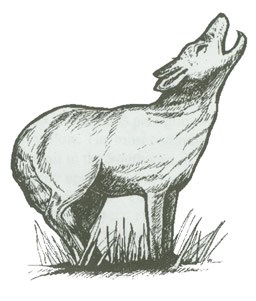
Valerie Donovan Coyote (Canis Latrans) Head and body length – about 3 feet; tail length – 11-15 inches; weight 20-50 lbs. The coyote looks like a dog with a pointed nose and a bushy tail. Fur color is usually gray or reddish gray. Legs, ears and feet are normally a rust color. The coyote holds its tail between its legs when it runs. It is usually nocturnal, but can be seen anytime during the day. It is a scavenger and will eat almost anything it can get a hold of (including dogs and cats). Coyotes den in the ground and can run up to 40 mph. 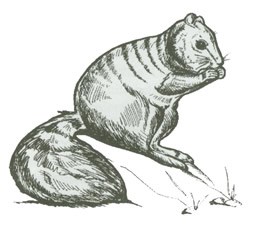
Valerie Donovan Rock Squirrel (Citellus variegates) Head and body length – 10-11 inches; tail length – 7-10 inches. Usually seen around or on top of boulders, its coloration is a mottled gray or brown with a slight amount of rust mixed in. Its tail is long and bushy. The rock squirrel is a good climber. Its diet consists of seeds, fruits, nuts, eggs, and bits of meat. The squirrel will store food in dens underneath boulders. 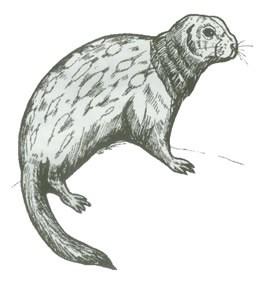
Valerie Donovan Spotted Ground Squirrel (Citellus spilosoma) Head and body length – 5-6 inches; tail length – 2-3 inches. The squirrel’s coloration is a grayish brown with white spots on its back. The tail is “pencil-like” (not bushy). It is active diurnally, throughout the year, feeding on green vegetation, seeds, insects, fruits and nuts. The spotted ground squirrel is often seen near roadsides running into a burrow. It prefers sandy soil. 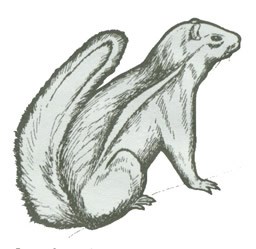
Valerie Donovan Whitetail Antelope Squirrel (Ammospermophilus leucurus) Head and body length 5-6 inches; tail length 2-3 inches. The squirrel looks like a chipmunk, but chipmunks don’t have white under their tail. Fur color is gray with white stripe on each side of the body. The underside of the tail is white and is usually curled over the squirrel’s back. Antelope squirrels are active throughout the year and are mostly diurnal (come out during the day). They store food, eating seeds, insects, fruits, nuts and bits of meat if they find them. This squirrel does not need drinking water. 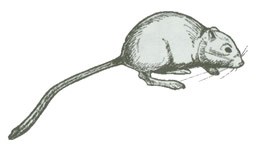
Valerie Donovan 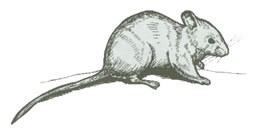
Valerie Donovan Deer Mouse (Peromyscus maniculatus) Head and body length – 3-4 inches; tail length 2-5 inches. Coloration is highly variable from pale gray to reddish brown. The tail is always bi-colored – while below, dark above. Very well distributed throughout the U.S., nests wherever there is shelter. Feeds on seeds, nuts, and insects. This genus has been linked with the spread of Hantavirus in the U.S. 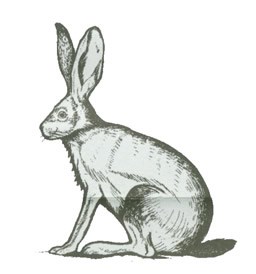
Valerie Donovan Black-Tailed Jackrabbit (Lepus californicus) Head and body length – 17-21 inches; ear length 6-7 inches; weight 3-7 lbs. Coloration is grayish brown with black-tipped ears and a tail with a black stripe on top. Probably the most common jackrabbit in the west. Primarily nocturnal, it sits beneath clumps of vegetation during the day. 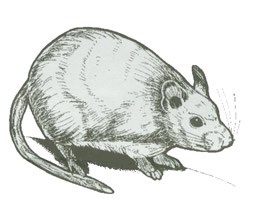
Valerie Donovan White-throated Wood Rat (Neotoma albigula) Head and body length – 7-8 inches; tail length 5-7 inches. Coloration is grayish with a white belly and feet. The tail is bi-colored – white below, dark above. This rodent feeds on cactus, seeds and fruits. The wood rat (a.k.a. packrat) constructs large middens made of scavenged materials, then “cements” them together with feces and urine. Middens are often occupied for thousands of years by different rats. The middens give scientists an idea of what past environments were like. 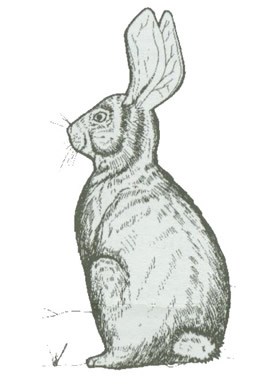
Valerie Donovan Desert Cottontail (Sylvilagus auduboni) Head and body length – 12-15 inches; ear length 3-4 inches; weight 1 ½ - 2 ½ lbs. Coloration is pale gray washed with yellow. The most common cottontail in the southwest, it is primarily nocturnal, but can be seen anytime of the day. Usually burrows into the ground.
Additional Sources Burt, W.H. and R.P. Grossenheider 1980. Peterson Field Guide to the Mammals of North America. Houghton Mifflin Co. Boston, MA. 289 pp. Cockrum, E.L. and Y. Petryszyn 1992. Mammals of the Southwestern United States and Northwestern Mexico. Treasure Chest Publications, Inc. Tucson, AZ. 192 pp. Olin, G. and D. Thompson 1982. Mammals of the Southwestern Deserts. Southwest Parks and Monuments Associtaiton, Tucson, AZ. 99 pp. |
Last updated: September 8, 2025
